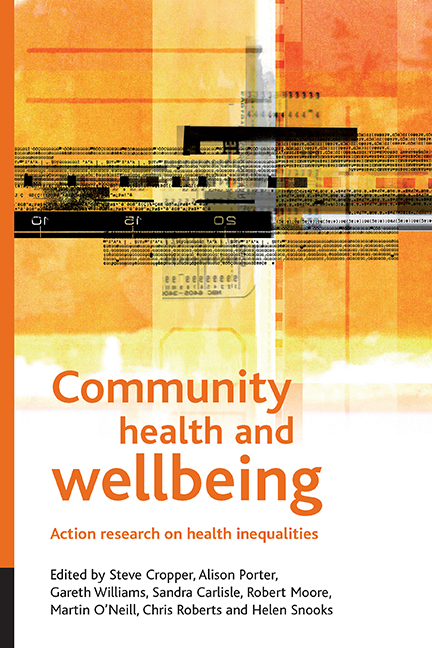21 results
PP19 Opioid Poisoning Deaths: A National Picture
-
- Journal:
- International Journal of Technology Assessment in Health Care / Volume 34 / Issue S1 / 2018
- Published online by Cambridge University Press:
- 03 January 2019, p. 73
-
- Article
-
- You have access
- Export citation
PP085 A Scoping Review Of Emergency Assessment And Referral Of Suspected Transient Ischemic Attack
-
- Journal:
- International Journal of Technology Assessment in Health Care / Volume 33 / Issue S1 / 2017
- Published online by Cambridge University Press:
- 12 January 2018, pp. 110-111
-
- Article
-
- You have access
- Export citation
PP150 Rapid Analgesia For Prehospital Hip Disruption: A Feasibility Study
-
- Journal:
- International Journal of Technology Assessment in Health Care / Volume 33 / Issue S1 / 2017
- Published online by Cambridge University Press:
- 12 January 2018, pp. 140-141
-
- Article
-
- You have access
- Export citation
VP172 Clinical Effectiveness Of A Predictive Risk Model In Primary Care
-
- Journal:
- International Journal of Technology Assessment in Health Care / Volume 33 / Issue S1 / 2017
- Published online by Cambridge University Press:
- 12 January 2018, p. 229
-
- Article
-
- You have access
- Export citation
VP132 Cost Effectiveness Of A Predictive Risk Model In Primary Care
-
- Journal:
- International Journal of Technology Assessment in Health Care / Volume 33 / Issue S1 / 2017
- Published online by Cambridge University Press:
- 12 January 2018, pp. 209-210
-
- Article
-
- You have access
- Export citation
VP88 Transient Ischaemic Attack Referral (TIER) Intervention Development
-
- Journal:
- International Journal of Technology Assessment in Health Care / Volume 33 / Issue S1 / 2017
- Published online by Cambridge University Press:
- 12 January 2018, pp. 189-190
-
- Article
-
- You have access
- Export citation
OP75 Implementing Risk Stratification In Primary Care: A Qualitative Study
-
- Journal:
- International Journal of Technology Assessment in Health Care / Volume 33 / Issue S1 / 2017
- Published online by Cambridge University Press:
- 12 January 2018, pp. 34-35
-
- Article
-
- You have access
- Export citation
VP205 Implementing Electronic Records In Ambulances
-
- Journal:
- International Journal of Technology Assessment in Health Care / Volume 33 / Issue S1 / 2017
- Published online by Cambridge University Press:
- 12 January 2018, p. 246
-
- Article
-
- You have access
- Export citation
PP059 National Survey Of Current United Kingdom Ambulance Service Transient Ischemic Attack Referral Pathways
-
- Journal:
- International Journal of Technology Assessment in Health Care / Volume 33 / Issue S1 / 2017
- Published online by Cambridge University Press:
- 12 January 2018, pp. 98-99
-
- Article
-
- You have access
- Export citation
Contents
-
- Book:
- Community Health and Wellbeing
- Published by:
- Bristol University Press
- Published online:
- 15 September 2022
- Print publication:
- 22 October 2007, pp iii-iv
-
- Chapter
- Export citation
List of tables and figures
-
- Book:
- Community Health and Wellbeing
- Published by:
- Bristol University Press
- Published online:
- 15 September 2022
- Print publication:
- 22 October 2007, pp v-vi
-
- Chapter
- Export citation
Preface
-
- Book:
- Community Health and Wellbeing
- Published by:
- Bristol University Press
- Published online:
- 15 September 2022
- Print publication:
- 22 October 2007, pp vii-xii
-
- Chapter
- Export citation
Notes on contributors
-
- Book:
- Community Health and Wellbeing
- Published by:
- Bristol University Press
- Published online:
- 15 September 2022
- Print publication:
- 22 October 2007, pp xv-xviii
-
- Chapter
- Export citation
four - Action research partnerships: contributing to evidence and intelligent change
-
-
- Book:
- Community Health and Wellbeing
- Published by:
- Bristol University Press
- Published online:
- 15 September 2022
- Print publication:
- 22 October 2007, pp 73-104
-
- Chapter
- Export citation
seven - Evaluation, evidence and learning in community-based action research
-
-
- Book:
- Community Health and Wellbeing
- Published by:
- Bristol University Press
- Published online:
- 15 September 2022
- Print publication:
- 22 October 2007, pp 147-170
-
- Chapter
- Export citation
SHARP DVD: A Way of Working Together to Improve Our Lives
-
- Book:
- Community Health and Wellbeing
- Published by:
- Bristol University Press
- Published online:
- 15 September 2022
- Print publication:
- 22 October 2007, pp 236-237
-
- Chapter
- Export citation
nine - Beyond the experimenting society
-
-
- Book:
- Community Health and Wellbeing
- Published by:
- Bristol University Press
- Published online:
- 15 September 2022
- Print publication:
- 22 October 2007, pp 199-220
-
- Chapter
- Export citation

Community Health and Wellbeing
- Action Research on Health Inequalities
-
- Published by:
- Bristol University Press
- Published online:
- 15 September 2022
- Print publication:
- 22 October 2007
Acknowledgements
-
- Book:
- Community Health and Wellbeing
- Published by:
- Bristol University Press
- Published online:
- 15 September 2022
- Print publication:
- 22 October 2007, pp xiii-xiv
-
- Chapter
- Export citation
Frontmatter
-
- Book:
- Community Health and Wellbeing
- Published by:
- Bristol University Press
- Published online:
- 15 September 2022
- Print publication:
- 22 October 2007, pp i-ii
-
- Chapter
- Export citation



